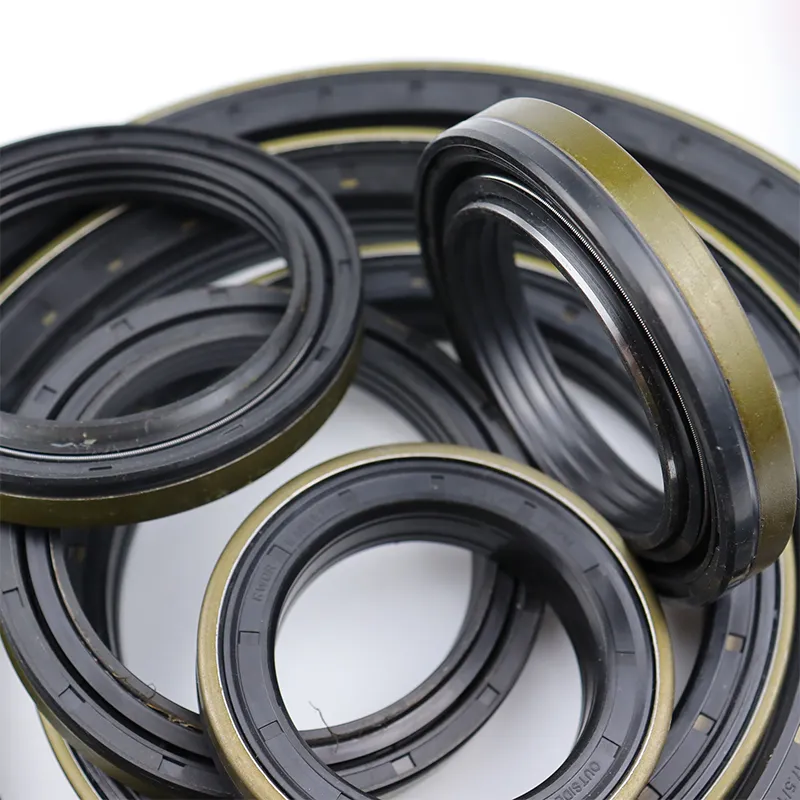Novemba . 07, 2024 12:31 Back to list
Understanding Cylinder Gland Seals for Enhanced Fluid Control and Machinery Performance
Understanding Cylinder Gland Seals Function, Design, and Applications
Cylinder gland seals play a crucial role in the functionality and efficiency of hydraulic and pneumatic systems. These seals are designed to prevent fluid leakage along the rod or piston that moves in and out of a cylinder, maintaining the overall pressure and ensuring optimal operation. This article explores the importance of cylinder gland seals, their design considerations, types, and applications.
Importance of Cylinder Gland Seals
In hydraulic and pneumatic systems, pressure retention is paramount for operational effectiveness. A cylinder gland seal, also known as a rod seal, serves to isolate the internal pressure from the outside environment, preventing leakage of hydraulic fluid or compressed air. The integrity of these seals directly impacts the system's efficiency, safety, and longevity. Leakage can lead to reduced performance, increased energy consumption, environmental contamination, and potential safety hazards.
Design Considerations
When designing a cylinder gland seal, several factors must be taken into account to ensure optimal performance
1. Material Selection The material of the seal must withstand various conditions, including extreme temperatures, pressures, and exposure to different types of fluids. Common materials include rubber, polyurethane, and PTFE (Teflon), each chosen for its specific properties.
2. Seal Profile The geometry of the seal is critical in providing effective sealing while allowing for the necessary movement of the rod or piston. Common designs include O-rings, U-cups, V-rings, and custom profiles tailored to specific applications.
3. Clearance and Fit Achieving the right fit between the seal and the cylinder is essential. Too tight of a fit can cause excessive wear or damage, while too loose of a fit may compromise sealing capabilities. Engineers must carefully calculate the tolerances based on the expected operational conditions.
4. Surface Finish The surface finish of the cylinder and the rod also plays a vital role in sealing performance. A smooth surface reduces friction, enhancing the lifespan of both the seal and the moving component.
Types of Cylinder Gland Seals
Cylinder gland seals can be categorized into various types based on their design and application
cylinder gland seal

1. O-Ring Seals O-rings are versatile and widely used due to their simple design and effectiveness. They are typically placed in a groove within the gland and can accommodate moderate pressures and temperatures.
2. U-Cup Seals This type of seal resembles the letter U and is effective in providing a tighter seal during dynamic applications. U-cup seals are often used in reciprocating applications where there is significant movement.
3. V-Ring Seals V-rings are designed to provide a secondary sealing effect, often used in conjunction with O-rings or U-cups to enhance sealing performance.
4. Custom Seals For specialized applications, custom seals can be designed to meet specific operational requirements. These can include unique shapes, materials, or configurations.
Applications of Cylinder Gland Seals
Cylinder gland seals find applications across various industries
- Automotive In automotive systems, these seals are critical for hydraulic brake systems and power steering, where effective sealing is essential for safety and performance.
- Industrial Machinery Machines that utilize hydraulic cylinders, such as forklifts, excavators, and presses, rely on resilient gland seals to maintain pressure and prevent leaks.
- Aerospace In the aerospace industry, cylinder gland seals are employed in hydraulic systems controlling landing gears and flight control surfaces, where reliability and performance are paramount.
- Marine Marine applications often expose seals to harsh conditions of saltwater and varying pressures, necessitating robust materials and designs to ensure longevity and reliability.
Conclusion
Cylinder gland seals are integral components within hydraulic and pneumatic systems, ensuring effective sealing and system performance. Their design must encompass various factors including material selection, geometry, and compatibility with other components. As industries continue to evolve and demand higher efficiency and reliability, innovations in cylinder gland seal technology will remain essential to meet these challenges, affecting sectors from automotive to aerospace. Understanding the critical role of these seals can help engineers and designers create more effective and reliable systems, ultimately enhancing operation and safety across numerous applications.
-
Unlocking the Potential of Hydraulic Systems with Essential Sealing Solutions
NewsAug.06,2025
-
Unleash the Power of Your Hydraulic Systems with Our Premium Seal Kits
NewsAug.06,2025
-
Specialized Hydraulic Seal Kits for Breakers, Pistons, and Presses
NewsAug.06,2025
-
Revitalize Hydraulic Systems with Premium Repair and Seal Kits
NewsAug.06,2025
-
Fortify Your Cylinders with Premium Sealing Solutions
NewsAug.06,2025
-
Elevate Hydraulic System Reliability with Specialized Seal Kits
NewsAug.06,2025
-
TCN Oil Seal Metal Ring Reinforcement for Heavy Machinery
NewsJul.25,2025
Products categories
















